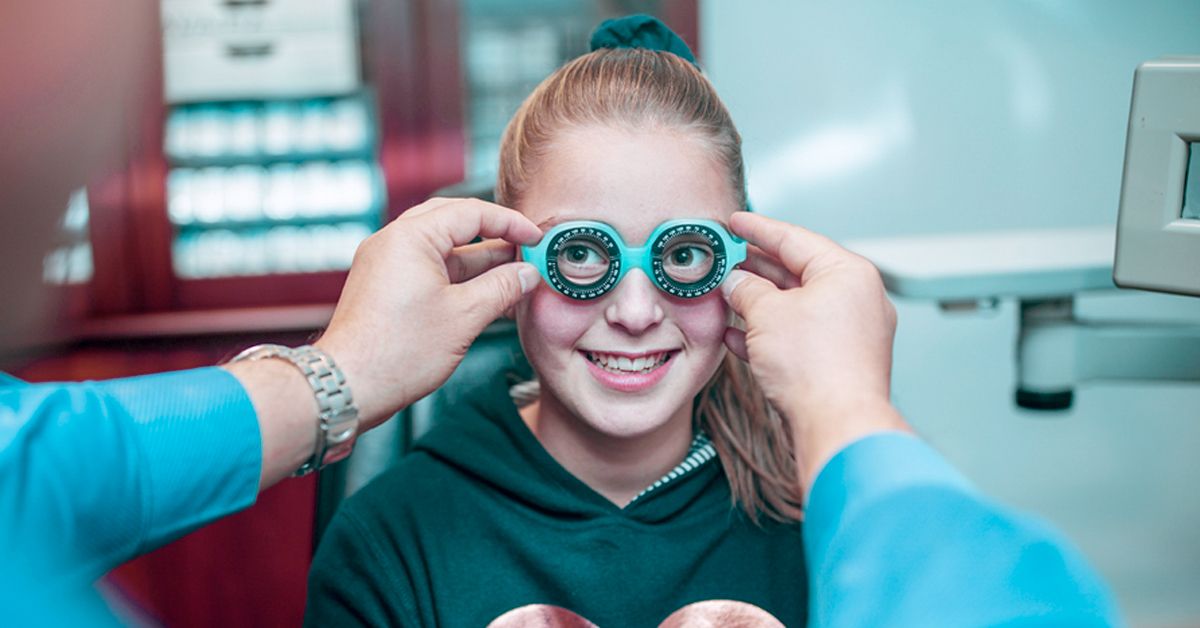Exploring the most up to date Technological Advancements in Optometry and What They Mean for Eye Doctors
In the ever-evolving area of optometry, current technological improvements are reshaping how specialists come close to eye treatment. From the precision of Optical Comprehensibility Tomography to the nuanced insights supplied by AI-driven diagnostic tools, these developments are establishing new standards in individual assessment and therapy. Teleoptometry is positioned to redefine access, guaranteeing that know-how transcends geographical constraints. As these improvements penetrate the practice, eye doctors are confronted with the obstacle of embracing these tools to enhance individual results. Yet, the question continues to be: just how will these technical shifts redefine the roles and responsibilities within the profession?
Advancements in Diagnostic Equipment
Progressing the field of optometry, innovations in analysis tools have actually changed the means eye treatment specialists assess and diagnose ocular conditions and aesthetic disabilities. The past decade has actually seen substantial technological improvements, enabling more detailed and precise examinations. Optical Comprehensibility Tomography (OCT), for instance, offers high-resolution cross-sectional pictures of the retina, enabling the early discovery of diseases such as glaucoma and age-related macular deterioration. This non-invasive imaging strategy has become essential in contemporary optometric method.
Another secret development is the intro of sophisticated corneal topography systems, which map the surface curvature of the cornea with precision. These devices are particularly helpful for suitable call lenses and diagnosing corneal disorders. Moreover, digital retinal imaging has actually transformed typical ophthalmoscopy, offering in-depth, breathtaking views of the retina that promote comprehensive aesthetic examinations.
The development of wavefront aberrometry has also been crucial, enabling the evaluation of refractive errors with unrivaled precision (Eye Doctor Optometrist). This modern technology assists in customizing restorative lenses and boosting surgical outcomes for refractive surgical procedures. Jointly, these analysis developments encourage optometrists to deliver exceptional client care, making sure early intervention and customized therapy approaches, ultimately improving visual wellness outcomes
AI in Patient Administration
Building on the foundation of innovative diagnostic tools, the consolidation of expert system (AI) in person monitoring represents a transformative leap for optometry. AI systems are progressively used to boost efficiency, accuracy, and personalization in individual treatment. By examining substantial quantities of information, AI can recognize patterns and anticipate possible ocular conditions, enabling eye doctors to tailor interventions better. This capability is important in taking care of chronic eye diseases such as glaucoma and diabetic retinopathy, where early detection and constant surveillance are key.
Moreover, AI-driven systems help with structured client interactions and management processes. Automated organizing, virtual consultations, and personalized follow-up strategies not just enhance client contentment however additionally optimize time administration for professionals. These systems can triage patients based on the necessity of their problems, guaranteeing that those in essential demand get punctual interest.
Furthermore, AI enhances decision-making by supplying eye doctors with evidence-based suggestions and therapy pathways. By integrating information from digital wellness records, AI tools supply understandings that educate clinical decisions, reducing the risk of mistakes and enhancing individual end results. As AI remains to advance, its role in individual management will likely broaden, improving the landscape of optometric care.
Advancements in Retinal Imaging
In the realm of optometry, retinal imaging has actually experienced impressive technological advancements that are enhancing diagnostic abilities and patient treatment. Technologies such as Optical Coherence Tomography (OCT) and fundus digital photography have revolutionized exactly how eye doctors envision and assess the retina.
Boosted imaging techniques like OCT angiography are further refining analysis precision. This non-invasive method maps blood circulation in the retina, using essential insights right into vascular wellness without the requirement for dye shots. Additionally, adaptive optics technology is being incorporated right into retinal imaging systems to correct ocular aberrations, delivering extraordinary picture clearness. Such innovations facilitate the recognition of min retinal adjustments that could signify condition progression.
Furthermore, improvements in expert system are increasing retinal imaging by enabling computerized evaluation of large datasets. These systems assist see page eye doctors in recognizing patterns indicative of pathology, consequently boosting diagnostic precision and performance. Collectively, these technologies are changing retinal imaging right into a cornerstone of modern-day eye care, improving end results and expanding therapeutic opportunities.
Teleoptometry's Expanding Role
Teleoptometry is significantly becoming an essential part of eye care, driven by innovations in digital communication and diagnostic devices. As optometry embraces electronic change, teleoptometry helps with remote assessments, allowing optometrists to prolong their solutions beyond traditional limits. This is particularly beneficial in underserved and country areas where accessibility to specialized eye treatment is commonly minimal. By leveraging high-resolution video clip conferencing and advanced retinal imaging, optometrists can conduct detailed eye examinations from afar, guaranteeing timely diagnosis and therapy.
The combination of expert system (AI) additional boosts teleoptometry, enabling the evaluation of visual information and helping in the discovery of ocular problems such as glaucoma and diabetic retinopathy. AI-powered formulas can quickly interpret complex imaging data, supplying eye doctors with valuable insights that bolster medical decision-making.
In addition, teleoptometry sustains continuity of care with smooth combination with digital health and wellness records (EHRs), permitting eye doctors to preserve thorough person histories. This ensures that clients obtain customized and consistent treatment even when consulting with different specialists.
Regardless of these advantages, difficulties stay, including guaranteeing information safety and taking care of individual expectations. However, teleoptometry stands for a significant stride towards more accessible, reliable, and patient-centered eye treatment. As modern technology evolves, its duty is positioned to expand even more.

Future Fads in Eye Treatment
A myriad of cutting-edge fads is readied to reshape the future of eye care, driven by technological developments and the developing needs of individuals. One considerable trend is the integration of artificial knowledge (AI) in diagnostics, which assures to enhance the accuracy and effectiveness of eye examinations. AI algorithms can assess vast amounts of data from retinal photos, potentially identifying problems like diabetic retinopathy and glaucoma earlier than standard methods.
In addition, tailored medicine is gaining traction in optometry, with genetic testing educating see here now personalized therapy strategies. This approach aims to enhance client end results by customizing treatments to specific hereditary accounts. Wearable technology, such as smart get in touch with lenses, is also coming up, providing real-time monitoring of intraocular stress or glucose degrees, thus supplying continual insights right into ocular and systemic health and wellness.
The fostering of enhanced truth (AR) and virtual truth (VR) in training and patient education is one more emerging trend. These modern technologies provide immersive experiences that can improve understanding and skills both for eye doctors and clients. As these patterns advance, eye doctors have to stay abreast of technical developments to supply sophisticated care, making sure improved person outcomes and complete satisfaction in the dynamic landscape of eye Get More Information treatment.
Final Thought

Collectively, these analysis innovations empower optometrists to supply premium patient care, ensuring early intervention and customized treatment strategies, inevitably enhancing visual health outcomes.

As these technologies continue to evolve, optometrists should adapt and include them right into method, ultimately optimizing process performance and raising the requirement of eye treatment provided to clients.